World Oral Health Day Campaign
March 27th, 2017

Healthier mouths achieve happier lives — that’s the motto of the World Oral Health Day campaign. The year-long campaign is launched every year on March 20th as part of a movement to create more awareness about the importance of having good oral health. The goal is to bring together all members of communities — government, health associations, and the public, to work toward preventing oral disease and maintaining mouth health.
The History of The World Oral Health Day Campaign
Although March 20, 2013 was the first date the campaign was widely recognized, it had its roots further back to 2007. The campaign was started by FDI World Dental Federation, a worldwide organization of dental professionals representing over 135 countries. The first celebration had originally taken place in September, but was later moved to March 20 for two reasons – September conflicted with an important Dental Congress meeting of the organization, and the significance of the numbers “32” and “20” could be represented in the date March 20, or 3/20. (Adults should have 32 healthy natural teeth, and babies or seniors should have 20).
Each year, the campaign focuses on a specific theme to target awareness and improvement efforts in that area. Past themes have included:
2013: Healthy Teeth for a Healthy Life
2014: Celebrating Healthy Smiles
2015: Smile for Life!
2016: Healthy mouth, Healthy Body
Each theme is specific enough to spark focused action but broad enough to be able to include individuals from all walks of life within its significance. The first year’s theme in 2013, for example, focused on the recognition that oral health problems can be just as lethal as other risk factors for chronic disease. Last year’s theme, “Healthy Mouth, Healthy Body” focused on a holistic view of oral health being one in the same as overall health.
Participating organizations get access to the campaign website, where they can get promotional materials such as posters, logos, and more to raise awareness of the celebration. Each year, the number of countries taking part in the campaign continues to increase, which shows that a growing number of world leaders are recognizing oral health to be important.
World Oral Health Day 2017 Campaign: Live Mouth Smart
This year’s theme is “Live Mouth Smart” — understanding that your oral health can affect your quality of life now and later on. This campaign focuses on four main points: safeguarding your oral health, avoiding risk factors, understanding that oral health is more than just a nice smile, and getting involved with the campaign’s activities. Major partners sponsor events all over the world to help spread the word. This year in Nigeria, for example, Pepsodent sponsored a “Health Walk,” which, as part of the “Brush Day and Night Campaign” will seek to educate millions of Nigerian families on best oral health practices.
The World Oral Health Day Campaign is also being celebrated widely on social media, with the hashtags #WOHD17 and #LiveMouthSmart. Premade headers are available on their website so people can show their support online. Posters and other pamphlets or resources are available for use on the website as well.
Although March 20, 2017, is the official launch date of this campaign, the message of fostering and sustaining good oral health goes on all year. The FDI World Dental Federation has already created a sense of urgency around the issue of oral health, and the campaign and movement will hopefully continue to grow and change habits and lives of many individuals around the world.
If you have any questions about how to take care of your teeth, or if you’d like to book an appointment with Chicago’s number one dentistry, Water Tower Dental Care, contact us today.








 Apple cider vinegar has long been touted as a natural health remedy. It can aid digestion, help control blood sugar levels, alleviate sunburns, make hair shinier, and maybe even play a role in weight loss!
Apple cider vinegar has long been touted as a natural health remedy. It can aid digestion, help control blood sugar levels, alleviate sunburns, make hair shinier, and maybe even play a role in weight loss! For the most gorgeous teeth in Chicago – or anywhere –
For the most gorgeous teeth in Chicago – or anywhere –  There are many ways to brush teeth, but some are much more effective than others. Using a Sonicare Electric Toothbrush, the number one brand recommended by dental professionals, delivers a superior clean for a healthier mouth. For optimal results, even this advanced toothbrush needs to be used properly.
There are many ways to brush teeth, but some are much more effective than others. Using a Sonicare Electric Toothbrush, the number one brand recommended by dental professionals, delivers a superior clean for a healthier mouth. For optimal results, even this advanced toothbrush needs to be used properly. When you’re fast asleep, the last thing you’re thinking about is your teeth. (Unless you’re having a dental dream, of course.) So it’s important to make sure that your teeth are well protected before you hit the hay for a long night of sleep. We’ve put together a short checklist that you can use every night before you go to bed to keep your teeth protected all night long.
When you’re fast asleep, the last thing you’re thinking about is your teeth. (Unless you’re having a dental dream, of course.) So it’s important to make sure that your teeth are well protected before you hit the hay for a long night of sleep. We’ve put together a short checklist that you can use every night before you go to bed to keep your teeth protected all night long. Over the years, the use of fluoride in both water and toothpaste has been very controversial. Some people argue that fluoride can cause serious health issues, while experts have found that fluoride can significantly improve dental health. So what’s the truth? Today, we’re going to look at the scientific facts to determine whether fluoride is good or bad for your teeth.
Over the years, the use of fluoride in both water and toothpaste has been very controversial. Some people argue that fluoride can cause serious health issues, while experts have found that fluoride can significantly improve dental health. So what’s the truth? Today, we’re going to look at the scientific facts to determine whether fluoride is good or bad for your teeth. The food and drink you put into your mouth can make all of the difference when it comes to your dental health. When some people drink water, soda, or other drinks with ice, they may experience tooth pain. Does this mean ice is bad for your teeth? Let’s take a look now.
The food and drink you put into your mouth can make all of the difference when it comes to your dental health. When some people drink water, soda, or other drinks with ice, they may experience tooth pain. Does this mean ice is bad for your teeth? Let’s take a look now. If you’re a fan of DIY dental care, you’ve probably heard of using baking soda to clean and whiten your teeth. Before you take on any DIY healthcare you read about online, it’s important to do your research. Using baking soda too regularly could cause irreversible damage to your enamel. However, that doesn’t mean you should never use baking soda on your teeth. Let’s explore if baking soda is actually good for your teeth now.
If you’re a fan of DIY dental care, you’ve probably heard of using baking soda to clean and whiten your teeth. Before you take on any DIY healthcare you read about online, it’s important to do your research. Using baking soda too regularly could cause irreversible damage to your enamel. However, that doesn’t mean you should never use baking soda on your teeth. Let’s explore if baking soda is actually good for your teeth now. Spring is a beautiful time of year, especially in Chicago. We boast some of the best temperatures during this time, perfect for visiting Millennium Park or heading to Wrigley Field. When the sun comes out during these glorious days, you will more often than not find yourself applying sunscreen to avoid those nasty burns. The sun is something that warms us to our core, yet too much of it can be dangerous to our skin.
Spring is a beautiful time of year, especially in Chicago. We boast some of the best temperatures during this time, perfect for visiting Millennium Park or heading to Wrigley Field. When the sun comes out during these glorious days, you will more often than not find yourself applying sunscreen to avoid those nasty burns. The sun is something that warms us to our core, yet too much of it can be dangerous to our skin. From teeth erosion revealing a little girl’s possession to shiny and strong pearly whites indicating fierce power, teeth play a surprisingly important role in many scary movies. With Halloween quickly approaching, we thought we’d document the scariest chompers from horror movies to set the mood for the most haunted night of them all. You might want to turn on the lights for this one.
From teeth erosion revealing a little girl’s possession to shiny and strong pearly whites indicating fierce power, teeth play a surprisingly important role in many scary movies. With Halloween quickly approaching, we thought we’d document the scariest chompers from horror movies to set the mood for the most haunted night of them all. You might want to turn on the lights for this one.




 The 13-block stretch that you find our office on is called Chicago’s Magnificent Mile for a reason. It’s filled with the best in shopping, restaurants and entertainment (and dentists!) in Chicago. It truly is magnificent.
The 13-block stretch that you find our office on is called Chicago’s Magnificent Mile for a reason. It’s filled with the best in shopping, restaurants and entertainment (and dentists!) in Chicago. It truly is magnificent. With long sunny days outdoors and exotic vacations, ‘tis the season for love. And with love comes lots of smooching! When you’re in the moment with your loved one, we’re guessing that you aren’t thinking about how your kisses are affecting your mouth. Interestingly though, kisses really do impact your oral health, both positively and negatively. Our experts are here to tell you how exactly kissing does this with juicy detail. We’ll start with the bad news first.
With long sunny days outdoors and exotic vacations, ‘tis the season for love. And with love comes lots of smooching! When you’re in the moment with your loved one, we’re guessing that you aren’t thinking about how your kisses are affecting your mouth. Interestingly though, kisses really do impact your oral health, both positively and negatively. Our experts are here to tell you how exactly kissing does this with juicy detail. We’ll start with the bad news first. Just as you might expect, as the rest of your body ages, your teeth age as well. So what exactly happens to your teeth as they get older and what can you do now to help them out?
Just as you might expect, as the rest of your body ages, your teeth age as well. So what exactly happens to your teeth as they get older and what can you do now to help them out? It’s a surprise at how little many people think about their teeth until a true problem arises. Teeth are often ignored and given little care until it’s too late. The best thing a person can do for their teeth is to educate themselves on the proper care as well as their simple structure. Many people don’t even realize they have several different types of teeth. Today, we’d like to help our readers by listing the different types of teeth and how they help you every day.
It’s a surprise at how little many people think about their teeth until a true problem arises. Teeth are often ignored and given little care until it’s too late. The best thing a person can do for their teeth is to educate themselves on the proper care as well as their simple structure. Many people don’t even realize they have several different types of teeth. Today, we’d like to help our readers by listing the different types of teeth and how they help you every day.
 Many people mistakenly think that their teeth are made up of the same materials as their bones. Well, think again! Teeth are actually very different than bones, made up of several layers of tissue and minerals that help protect the teeth and keep them lasting a long time without the worry of serious wear. So while your teeth may look like funny-shaped bones, they are quite different.
Many people mistakenly think that their teeth are made up of the same materials as their bones. Well, think again! Teeth are actually very different than bones, made up of several layers of tissue and minerals that help protect the teeth and keep them lasting a long time without the worry of serious wear. So while your teeth may look like funny-shaped bones, they are quite different.

 Teeth whitening isn’t just for aesthetic purposes anymore. Did you know it can actually have oral health benefits? While many patients come to our offices to receive safe and fast teeth whitening to make their smiles brighter and give themselves a great boost of confidence, many don’t realize that they are also helping control the pH level of their mouth. This is an important factor when it comes to controlling plaque, bacteria, and tooth decay.
Teeth whitening isn’t just for aesthetic purposes anymore. Did you know it can actually have oral health benefits? While many patients come to our offices to receive safe and fast teeth whitening to make their smiles brighter and give themselves a great boost of confidence, many don’t realize that they are also helping control the pH level of their mouth. This is an important factor when it comes to controlling plaque, bacteria, and tooth decay. There is a lot to say about a smile that communicates your emotions precisely. It doesn’t always mean happy, either. A smile can communicate mischief, fear, doubt, surprise, and many other emotions. So how do you know if your smile is delivering the right message? First, you must find your perfect smile: the natural way you smile that makes you feel confident you’re communicating the right message. Here are our tips to getting that perfect smile.
There is a lot to say about a smile that communicates your emotions precisely. It doesn’t always mean happy, either. A smile can communicate mischief, fear, doubt, surprise, and many other emotions. So how do you know if your smile is delivering the right message? First, you must find your perfect smile: the natural way you smile that makes you feel confident you’re communicating the right message. Here are our tips to getting that perfect smile. Sometimes we find home remedies and new tricks to cleaning your teeth incredibly interesting, and potentially helpful. Oil pulling has been around for thousands of years, yet has only sparked the attention of many of our patients just recently. So what exactly is oil pulling and can it help keep your teeth is top health?
Sometimes we find home remedies and new tricks to cleaning your teeth incredibly interesting, and potentially helpful. Oil pulling has been around for thousands of years, yet has only sparked the attention of many of our patients just recently. So what exactly is oil pulling and can it help keep your teeth is top health?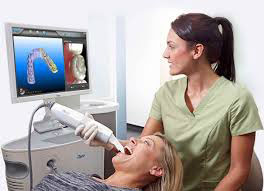 Dentistry has never been at a more exciting time when it comes to the rise of technology to help service the needs of the patient. One of the best technological developments is the iTero digital scanner. How does an iTero work, and how can it help you?
Dentistry has never been at a more exciting time when it comes to the rise of technology to help service the needs of the patient. One of the best technological developments is the iTero digital scanner. How does an iTero work, and how can it help you?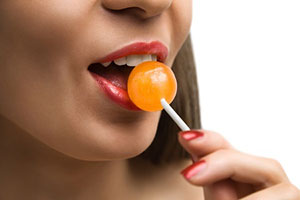 We’ve all been taught since a very young age that candy is the ultimate destroyer against teeth. However, new candies developed by scientists are turning that old story around. Now, there are several new candies (along with some older) that have beneficial attributes.
We’ve all been taught since a very young age that candy is the ultimate destroyer against teeth. However, new candies developed by scientists are turning that old story around. Now, there are several new candies (along with some older) that have beneficial attributes.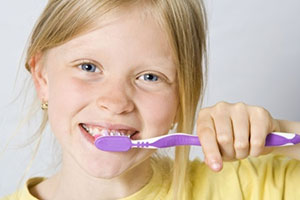 Do you have trouble convincing your children it’s time to brush their teeth? Many kids find it difficult to want to scrub their tiny molars as they see it just like any other chore. However, with the right attitude you can make brushing teeth a fun activity that your children get excited to do. Healthy teeth in young children are extremely important, so try out a few of these tips next time you’re brushing with your kids.
Do you have trouble convincing your children it’s time to brush their teeth? Many kids find it difficult to want to scrub their tiny molars as they see it just like any other chore. However, with the right attitude you can make brushing teeth a fun activity that your children get excited to do. Healthy teeth in young children are extremely important, so try out a few of these tips next time you’re brushing with your kids.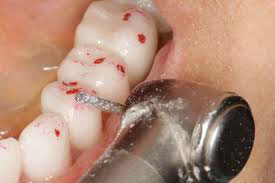 If you are experiencing, headaches, ear problems, clicking or grating jaw, mouth discomfort, and looseness of teeth, or any combination of these symptoms, you may be having an issue with your TMJ. If that’s the case, your dentist might recommend occlusal adjustments. What are occlusal adjustments? It is a method to reshape the surface of your teeth to create an even and harmonious relationship between the top and bottom teeth. To understand why this needs to happen though, we must dig a little deeper.
If you are experiencing, headaches, ear problems, clicking or grating jaw, mouth discomfort, and looseness of teeth, or any combination of these symptoms, you may be having an issue with your TMJ. If that’s the case, your dentist might recommend occlusal adjustments. What are occlusal adjustments? It is a method to reshape the surface of your teeth to create an even and harmonious relationship between the top and bottom teeth. To understand why this needs to happen though, we must dig a little deeper.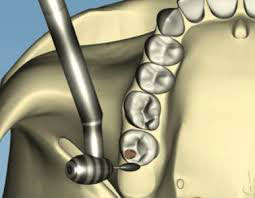 While shaving down teeth can seem like an easy option, it’s an irreversible procedure, and if the adjustments aren’t made properly, you could find yourself in a troubling situation. At Water Tower Dental, we offer non-damaging therapy options that can help fix the TMD condition. Using a Transcutaneous Electrical Neural Stimulation, or TENS, unit, we are able to asses any neuromuscular problems. While many doctors focus on the misplacement of the jaw, scientific developments have revealed that some problems associated with teeth, mouth, and jaws are actually caused by improper functions of the muscles and nerves. Using the TENS unit, we are able to find ideal positioning of the jaw.
While shaving down teeth can seem like an easy option, it’s an irreversible procedure, and if the adjustments aren’t made properly, you could find yourself in a troubling situation. At Water Tower Dental, we offer non-damaging therapy options that can help fix the TMD condition. Using a Transcutaneous Electrical Neural Stimulation, or TENS, unit, we are able to asses any neuromuscular problems. While many doctors focus on the misplacement of the jaw, scientific developments have revealed that some problems associated with teeth, mouth, and jaws are actually caused by improper functions of the muscles and nerves. Using the TENS unit, we are able to find ideal positioning of the jaw.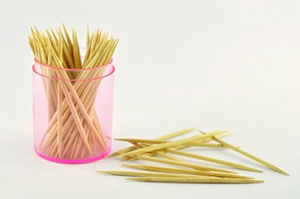 Toothpicks have been one of the most widely used tools for hygiene in the world. These simple pieces of carved wood help us free those annoying food particles stuck between our teeth after a rousing meal. But are toothpicks good for your teeth? Doesn’t the act of poking and prodding at your teeth and gums seem slightly wrong? If you have that inclination, it’s because you’re right. While toothpicks can be a helpful tool, overuse can be harmful and should call alarm to a bigger concern.
Toothpicks have been one of the most widely used tools for hygiene in the world. These simple pieces of carved wood help us free those annoying food particles stuck between our teeth after a rousing meal. But are toothpicks good for your teeth? Doesn’t the act of poking and prodding at your teeth and gums seem slightly wrong? If you have that inclination, it’s because you’re right. While toothpicks can be a helpful tool, overuse can be harmful and should call alarm to a bigger concern.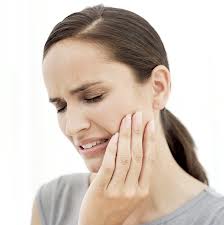 Clenching and grinding your teeth is a harmful and unhealthy habit to form. Unfortunately most people don’t even know they do it. Most teeth grinders do so in their sleep so they have no idea it’s happening. The result of clenching and grinding can cause serious damage to your teeth along with other symptoms. We’d like to show you how to stop grinding your teeth.
Clenching and grinding your teeth is a harmful and unhealthy habit to form. Unfortunately most people don’t even know they do it. Most teeth grinders do so in their sleep so they have no idea it’s happening. The result of clenching and grinding can cause serious damage to your teeth along with other symptoms. We’d like to show you how to stop grinding your teeth.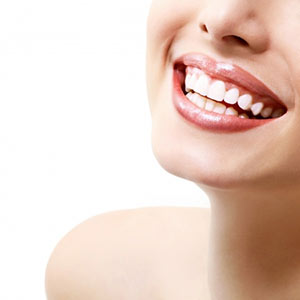 While listing out your New Years resolutions this time around, consider adding a few resolutions for your health, and specifically, your mouth. Keeping your teeth, gums, and tongue in good shape can help you in the years to come. Practicing good oral hygiene will help you look and feel good, along with allow you to avoid major dental surgeries and complications in the future. Here are 5 tips you can easily make into New Years resolutions for a better, healthier smile.
While listing out your New Years resolutions this time around, consider adding a few resolutions for your health, and specifically, your mouth. Keeping your teeth, gums, and tongue in good shape can help you in the years to come. Practicing good oral hygiene will help you look and feel good, along with allow you to avoid major dental surgeries and complications in the future. Here are 5 tips you can easily make into New Years resolutions for a better, healthier smile.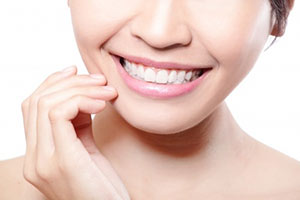 Of course it’s no question that the smartest practices for healthy teeth are brushing and flossing everyday. However, there are several more tips that can help you keep your teeth and gums healthy, and breath fresh. Today we’d like to discuss a few more smart practices for healthier teeth.
Of course it’s no question that the smartest practices for healthy teeth are brushing and flossing everyday. However, there are several more tips that can help you keep your teeth and gums healthy, and breath fresh. Today we’d like to discuss a few more smart practices for healthier teeth.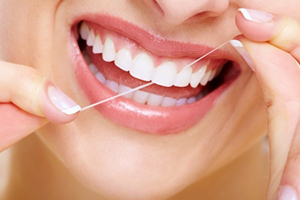 An interesting question that arises in our office from time to time from concerned patients is if they can potentially floss too much and cause damage to their teeth. Flossing is one of the most important oral hygiene practices a person should perform. It helps clear out plaque and bacteria build up between the teeth and gums that a normal toothbrush cannot reach. It may be surprising to read that you can, in fact, floss too much. However, we encourage you to read further to understand exactly what that means.
An interesting question that arises in our office from time to time from concerned patients is if they can potentially floss too much and cause damage to their teeth. Flossing is one of the most important oral hygiene practices a person should perform. It helps clear out plaque and bacteria build up between the teeth and gums that a normal toothbrush cannot reach. It may be surprising to read that you can, in fact, floss too much. However, we encourage you to read further to understand exactly what that means.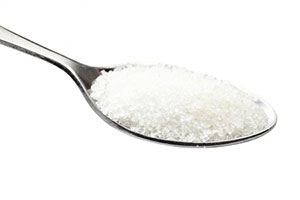 We’ve all been taught from a very young age about the dangers of sugar. We’re told to avoid candy, and to eat your vegetables. And while that is good advice, it misses the point. Sugar is one of the easiest fermentable substances available, and found in hundreds of foods, not just candy, so why the stigma? Well, it’s not so much the sugar that’s bad for your teeth; it’s the bacteria that love the sugar just as much as you.
We’ve all been taught from a very young age about the dangers of sugar. We’re told to avoid candy, and to eat your vegetables. And while that is good advice, it misses the point. Sugar is one of the easiest fermentable substances available, and found in hundreds of foods, not just candy, so why the stigma? Well, it’s not so much the sugar that’s bad for your teeth; it’s the bacteria that love the sugar just as much as you.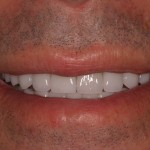
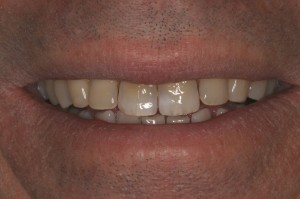
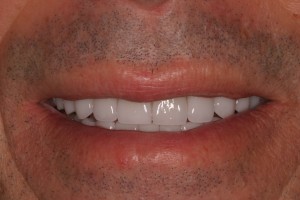

 1. Soda
1. Soda 2. Pickles
2. Pickles

 6. Saltine Crackers
6. Saltine Crackers 7. Sports and Energy Drinks
7. Sports and Energy Drinks Teeth need a great deal of calcium to stay strong, there's almost no better food to get it than through dairy products. Milk and cheese especially are great for your teeth and jawbone. Calcium prevents tooth decay by protecting your teeth from periodontal disease, a form of gum disease, as well as maintaining healthy bone structure of the teeth and jaw. About one-third of your body's bones and teeth are made of calcium, so it's important to have a great deal of it in your system. Yogurt, tofu, and soy milk are also good sources of calcium.
Teeth need a great deal of calcium to stay strong, there's almost no better food to get it than through dairy products. Milk and cheese especially are great for your teeth and jawbone. Calcium prevents tooth decay by protecting your teeth from periodontal disease, a form of gum disease, as well as maintaining healthy bone structure of the teeth and jaw. About one-third of your body's bones and teeth are made of calcium, so it's important to have a great deal of it in your system. Yogurt, tofu, and soy milk are also good sources of calcium. Another great food that’s rich in both calcium and Vitamin D is salmon. Without Vitamin D, your body cannot absorb and utilize the calcium that you've just consumed from your dairy products. Consuming food rich in Vitamin D is essential to healthy teeth. What better food to eat than salmon for your Vitamin D as it's also rich in Omega-3 fatty acids which help cognitive function, eye, cardiovascular, skin, and hair health.
Another great food that’s rich in both calcium and Vitamin D is salmon. Without Vitamin D, your body cannot absorb and utilize the calcium that you've just consumed from your dairy products. Consuming food rich in Vitamin D is essential to healthy teeth. What better food to eat than salmon for your Vitamin D as it's also rich in Omega-3 fatty acids which help cognitive function, eye, cardiovascular, skin, and hair health. Though mostly all vegetables are great for your teeth, there are many benefits to crunchier vegetables like cauliflower, broccoli, and cucumber. Crunchy vegetables contain many vitamins, minerals, and antioxidants that are all good for your health. Specifically to teeth, they contain Vitamin C, which helps prevent plaque and bacteria. As well, crunchy vegetables contain phosphorus, which is another major player in absorbing calcium. Last, crunchy vegetables promote and stimulate your salivary production. This is the body's natural way of washing debris and food from your teeth and gums while providing disease-fighting enzymes throughout your mouth to prevent infection.
Though mostly all vegetables are great for your teeth, there are many benefits to crunchier vegetables like cauliflower, broccoli, and cucumber. Crunchy vegetables contain many vitamins, minerals, and antioxidants that are all good for your health. Specifically to teeth, they contain Vitamin C, which helps prevent plaque and bacteria. As well, crunchy vegetables contain phosphorus, which is another major player in absorbing calcium. Last, crunchy vegetables promote and stimulate your salivary production. This is the body's natural way of washing debris and food from your teeth and gums while providing disease-fighting enzymes throughout your mouth to prevent infection. While crunchy vegetables are a good source of Vitamin C, oranges and other citrus fruits are your ultimate source. Vitamin C is extremely important to the teeth because of its ability to strengthen blood vessels and connective tissues. This is vital to keeping your teeth connected to your jaw. As well, vitamin C is an anti-inflammatory, which can help reduce and/or slow the progression of gingivitis.
While crunchy vegetables are a good source of Vitamin C, oranges and other citrus fruits are your ultimate source. Vitamin C is extremely important to the teeth because of its ability to strengthen blood vessels and connective tissues. This is vital to keeping your teeth connected to your jaw. As well, vitamin C is an anti-inflammatory, which can help reduce and/or slow the progression of gingivitis. Last, onions are a great source for anti-bacterial sulphur compounds, which play a major role in killing a lot of the bacteria that breed on your teeth and gums. If you don't mind just a little stinky breath for a minute, it's best to eat the onions raw. This will help you get the best from the vegetable to help prevent a fair amount of tooth decay.
Last, onions are a great source for anti-bacterial sulphur compounds, which play a major role in killing a lot of the bacteria that breed on your teeth and gums. If you don't mind just a little stinky breath for a minute, it's best to eat the onions raw. This will help you get the best from the vegetable to help prevent a fair amount of tooth decay.




 Website Powered by Sesame 24-7™
Website Powered by Sesame 24-7™